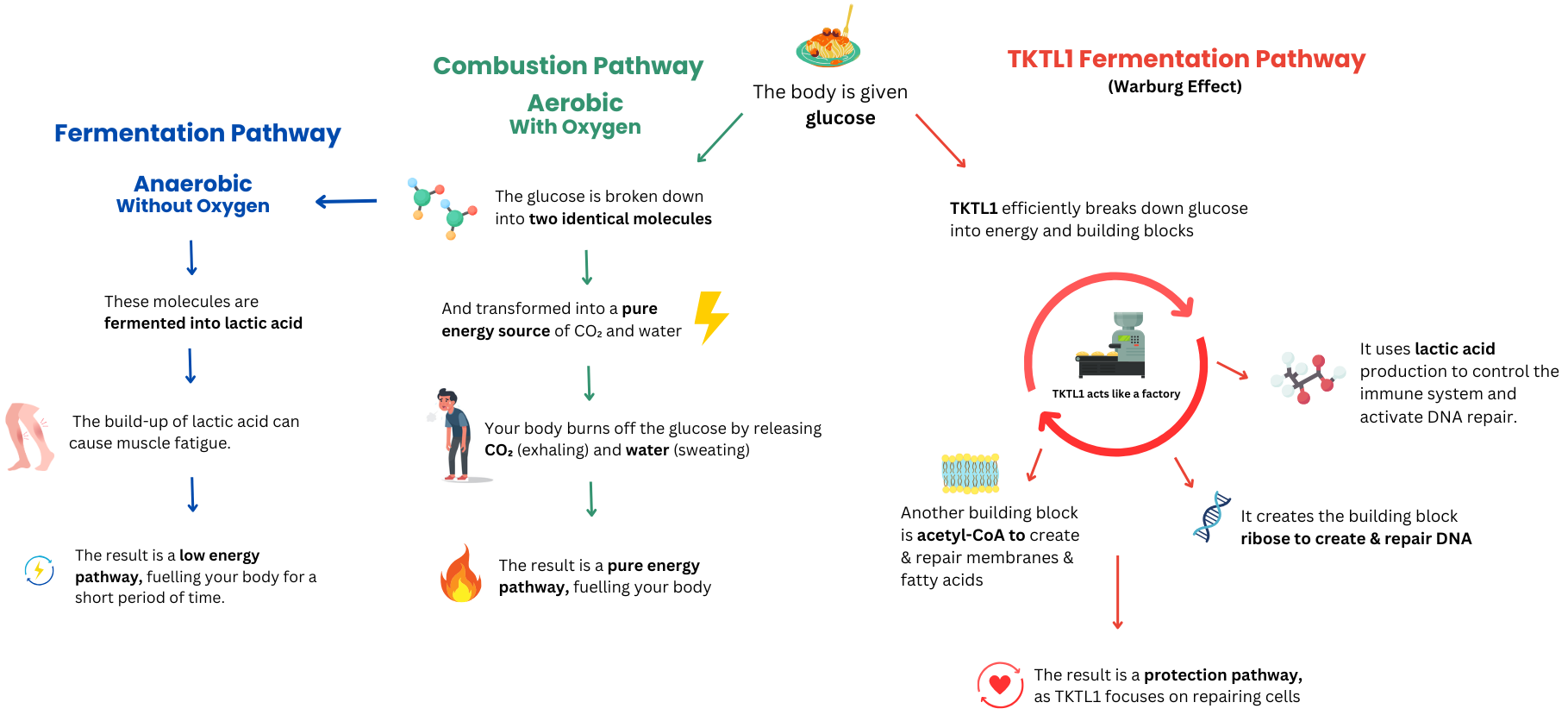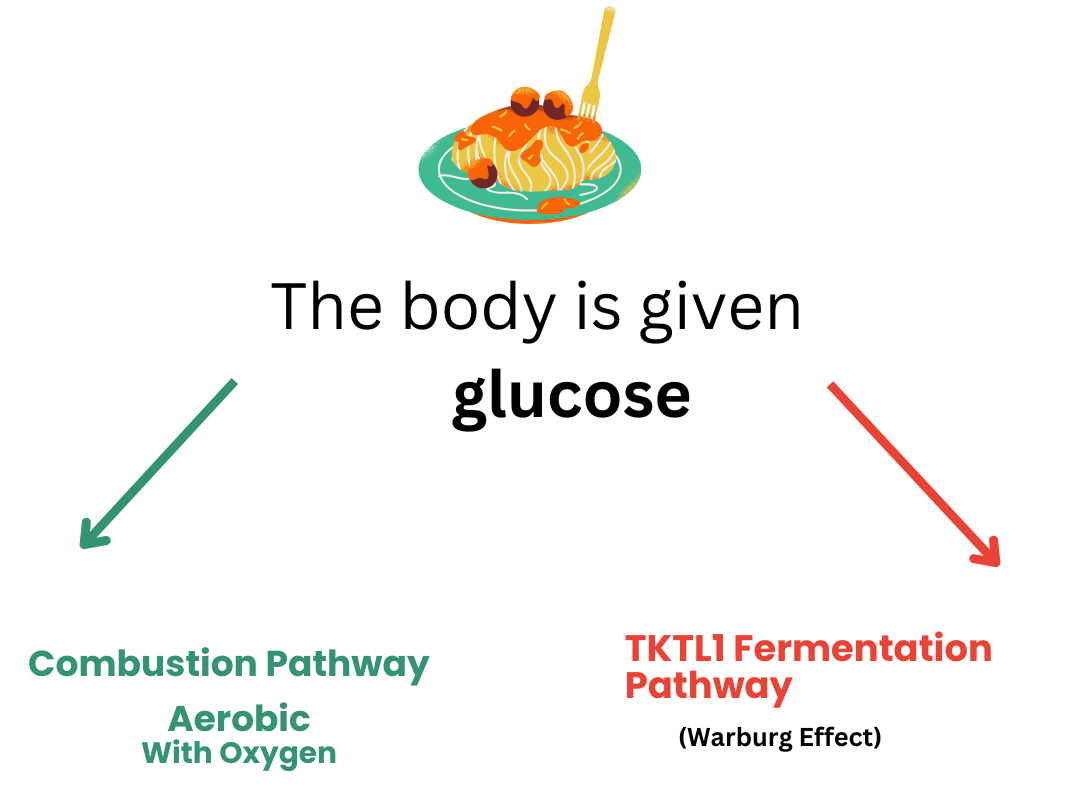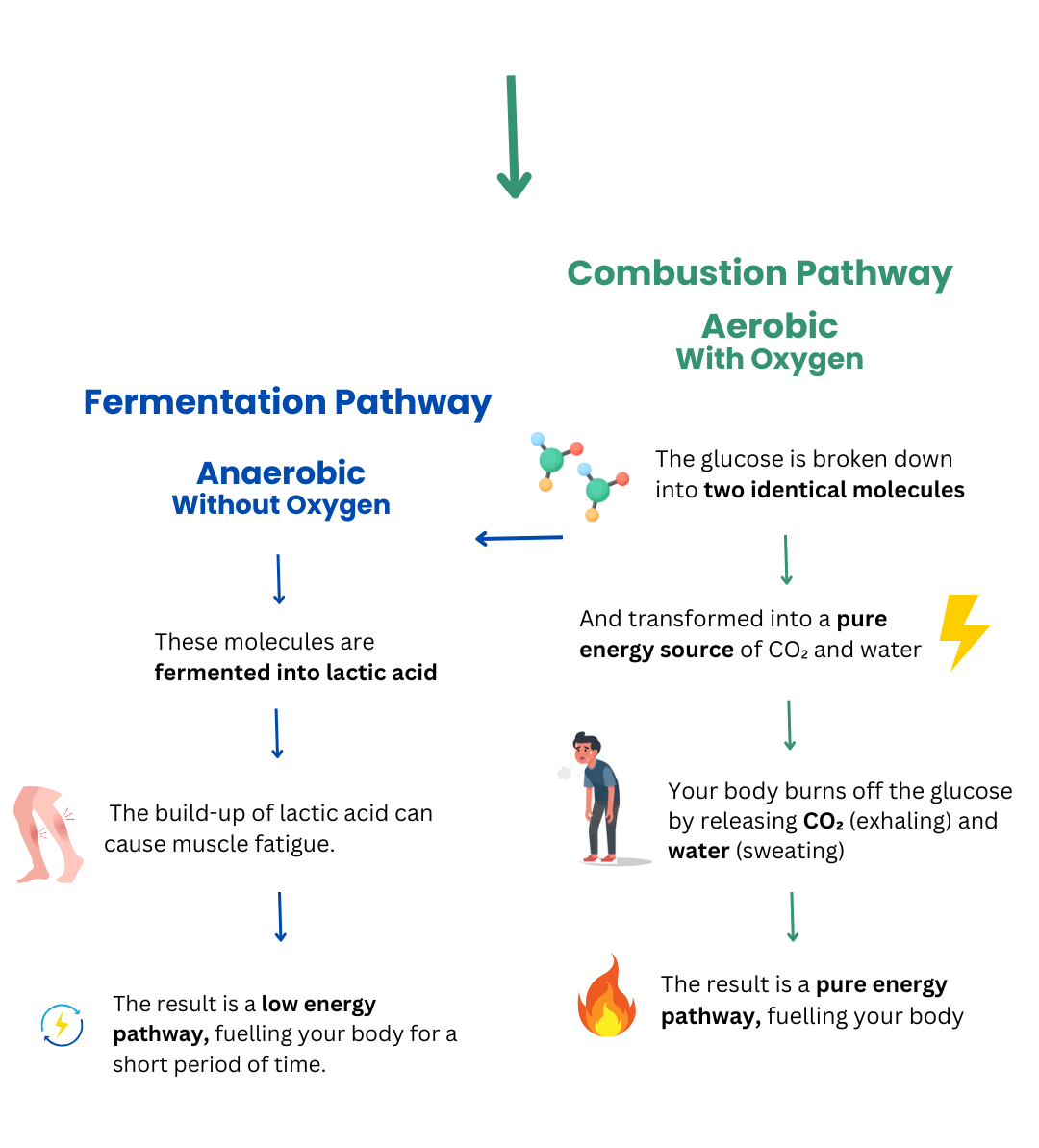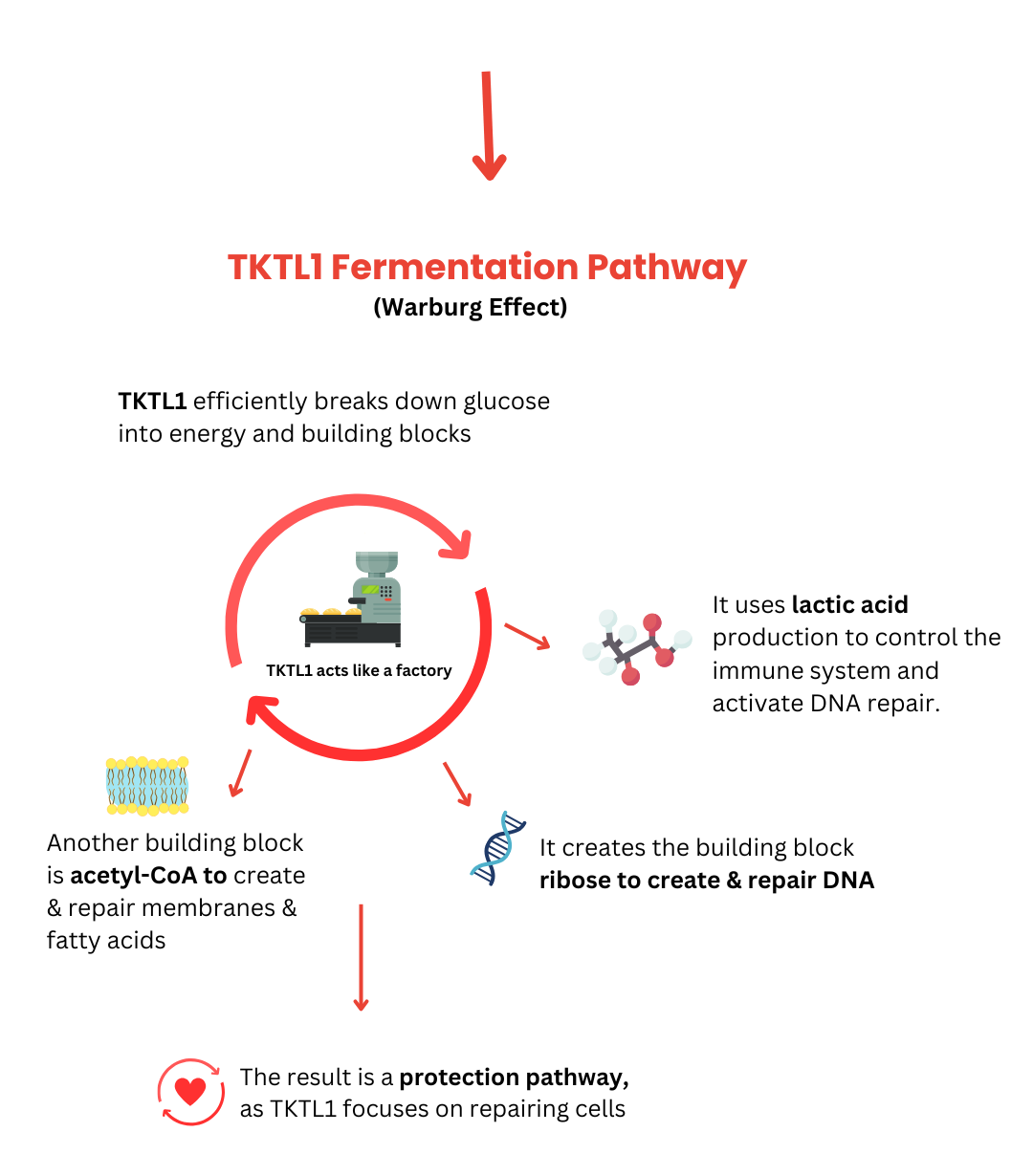What is Allulose?
Allulose is a naturally occurring rare sugar, also known as D-allulose or D-psicose. It’s found in trace amounts in foods such as figs, raisins, and maple syrup.
Although it has the same chemical formula as fructose, its structure is slightly different, resulting in a sugar that tastes like sucrose but is not metabolised in the same way. This makes it an appealing alternative for those seeking sweetness without the calories or blood sugar spikes associated with regular sugar.
Because it exists in such small amounts in nature, allulose is typically produced commercially through enzymatic conversion of fructose (usually from corn) using the enzyme D-allulose 3-epimerase.
This process allows for efficient, scalable production for food and beverage use.
Allulose at a glance
- 95% fewer calories compared to fructose, glucose and table sugar
- Low glycaemic index
- Blunts post meal glucose spikes
- Supports fat reduction
More and more independent accredited research highlights additional benefits of Allulose, including its ability to slow cellular ageing and damage, and decreases the harmful effects of free radicals.

What makes Allulose special
90% less calories than table sugar

Anti-inflammatory properties

Reduces Insulin Resistance
Reduces post meal glucose spikes

Sweetness without the calories
Allulose offers the sweet taste and mouthfeel of regular sugar, but with only about 0.4 kcal/g – roughly 90% fewer calories than sucrose. Unlike many other sugar substitutes, it doesn’t have a bitter aftertaste and behaves similarly to sucrose in baking and cooking.
But what truly sets it apart is its metabolic behaviour: it is absorbed by the body but not significantly metabolised, so it contributes almost no energy and has minimal impact on blood glucose or insulin levels. This makes it particularly suitable for people managing diabetes, insulin resistance, or simply trying to lower their sugar intake.
How does the calorie content of allulose compare to sucrose?
Allulose contains approximately 0.4 kcal/g, while sucrose contains 4.0 kcal/g. The following table shows how this difference plays out across various metabolic pathways.
This substantial difference makes allulose a valuable ingredient for reduced-calorie foods and diets targeting weight loss, glycaemic control, or metabolic health.
| Classic Calories | Fermenting Calories | Oxidising Calories | |
|---|---|---|---|
| Allulose | 0.4 kcal / g | ~0.1 kcal / g | ~0.1 kcal / g |
| Sucrose | 4 kcal / g | 4 kcal / g | 4 kcal / g |
Oxidising (using oxygen to release pure energy)




Making Energy from Metabolism
- Unlike glucose and fructose, which are quickly metabolised into energy or stored as fat, allulose takes a very different path in the body.
- It is absorbed by the small intestine but largely excreted unchanged in the urine, meaning it isn’t used as a source of energy.
- By bypassing the usual carbohydrate metabolism pathways, allulose has a very low caloric value.
- Therefore it doesn’t cause any significant rise in blood sugar or insulin levels.
- A very small amount may be fermented by gut bacteria in the colon or minimally oxidised, but even then, the energy contribution remains extremely low.
Benefits
Minimal impact on blood sugar: Ideal for people with diabetes or insulin resistance.
Supports fat reduction in the liver: May help reduce fat accumulation, a common issue in non-alcoholic fatty liver disease.
Helps lower insulin levels: Allulose has been shown to improve insulin sensitivity.
Blunts post-meal glucose spikes: When consumed with other sugars or carbohydrates, it can help reduce the glycaemic response.
Low-calorie sweetening: All the sweetness with a fraction of the calories.
Natural origin: Found in nature and produced via enzymatic conversion of fructose.
Allulose’s unique metabolic effect makes it ideal for:
Dental
Diabetes
Weight Management
Sports
Children
What scientific evidence supports the use of allulose?
Numerous studies support the health benefits and safety of allulose:
- Glycaemic control: Clinical studies show that allulose significantly reduces postprandial blood glucose and insulin responses when consumed with sucrose or other carbohydrates.
(Nutritional Outlook, 2021) - Fatty liver and metabolism: Research suggests allulose may improve liver health by reducing fat accumulation in the liver.
(Healthline, 2022) - Insulin sensitivity: Evidence shows that allulose consumption may improve insulin function and reduce insulin resistance.
(PubMed, 2015) - Safety: The U.S. FDA has granted GRAS (Generally Recognised As Safe) status. In the EU, regulatory approval is still pending, though safety opinions from EFSA are favourable.
(EFSA Journal, 2022) - Additional sources:
Frequently asked questions
Is allulose safe?
Yes. Allulose is recognised as Generally Recognised As Safe (GRAS) by the FDA in the United States. In Europe, while it is not yet approved, the European Food Safety Authority (EFSA) issued a positive safety opinion in 2022, which is expected to support its future approval.
Is allulose good for diabetics?
Yes. Allulose has minimal effect on blood sugar and insulin levels. Studies show it can reduce post-meal glucose and insulin spikes, making it appropriate for people with type 2 diabetes or insulin resistance.
Can allulose be used for cooking and baking?
Yes. Allulose performs similarly to sucrose in baking and cooking. It browns like sugar, adds bulk, and has a familiar mouthfeel—making it ideal for sweet recipes.
Does allulose raise blood sugar levels?
No. Clinical studies demonstrate that allulose does not significantly impact postprandial blood glucose levels, even when consumed alongside other sugars.
Does allulose raise insulin levels?
No. Allulose produces a significantly lower insulin response compared to sucrose and has shown beneficial effects on insulin sensitivity in research.
Is allulose keto friendly?
Yes. Allulose is absorbed in the small intestine but is not metabolised for energy. It contributes negligible calories and does not interfere with ketosis.
Is allulose fructose free?
Yes, allulose is considered fructose-free because it isn’t a fructose molecule. Although it’s structurally similar, its chemical makeup is different. Allulose is absorbed by the body but not metabolised like fructose, so it doesn’t raise blood sugar or insulin levels and provides lower calories.
Is allulose lactose free?
Yes. Allulose is a simple sugar and contains no dairy or lactose.
Is allulose gluten free?
Yes. Allulose is naturally gluten free and is safe for people with coeliac disease or gluten intolerance.
Is allulose safe for cancer patients?
While no cancer-specific studies are cited, allulose’s minimal effect on blood sugar and insulin—both of which are key metabolic concerns—makes it a promising sweetener in oncology-supportive diets. As always, patients should consult their healthcare provider for personalised guidance.
What does allulose taste like?
Allulose has about 70% of the sweetness of table sugar with a clean, sugar-like taste. It has no bitter or chemical aftertaste and behaves like sucrose in most recipes.
Is allulose healthy?
Yes—especially as a sugar alternative. Allulose may improve insulin sensitivity, reduce fat accumulation in the liver, and help lower overall calorie and sugar intake.
What is allulose made from?
Allulose is most commonly produced by enzymatically converting fructose (usually derived from corn) using the enzyme D-allulose 3-epimerase.
Where can I buy allulose?
In the United States, allulose is approved and widely available online and in stores as a standalone sweetener or in reduced-sugar products.
In Japan, South Korea, and Mexico, allulose is approved and used in functional foods and beverages.
In the European Union, allulose is not yet approved, but a 2022 EFSA safety opinion supports its future use. The approval process is underway and could lead to legal market access soon.
Access and availability depend on local food regulations, so it’s best to check with your country’s health or food authority if you’re outside these regions.
References
- Health.com – “Allulose: What You Need to Know” (2022)
https://www.health.com/allulose-7964478 - Nutritional Outlook – “Allulose Attenuates Postprandial Glycemic and Insulinemic Response” (May 2021)
https://www.nutritionaloutlook.com/view/allulose-attenuates-postprandial-glycemic-and-insulinemic-response-when-combined-with-sucrose-says-recent-study - Healthline – “Allulose and Fatty Liver Disease: What the Research Shows” (2022)
https://www.healthline.com/nutrition/allulose#improve-fatty-liver - Food Chemistry – “D-Allulose: A Natural Sweetener with Health Benefits” (2018)
https://pubs.rsc.org/en/content/articlelanding/2018/fo/c8fo01089g/unauth - PubMed – “Rare sugar D-allulose: Metabolic effects and potential applications” (2015)
https://pubmed.ncbi.nlm.nih.gov/26012374/ - J-Stage – “Update on Allulose Approval Process in Europe” (July 2023)
https://www.jstage.jst.go.jp/article/fts/7/1/7_15/_article/-char/ja/ - EFSA Journal – “Scientific Opinion on the Safety of D-allulose” (2022)
https://efsa.onlinelibrary.wiley.com/doi/10.2903/j.efsa.2022.7040 - MDPI – Allulose improves endurance and recovery
https://www.mdpi.com/2072-6643/14/3/404 - U.S. FDA –“The Declaration of Allulose…Guidance for Industry”
https://www.fda.gov/media/123342/download - MDPO – “Gastrointestinal Tolerance of D-Allulose in Healthy and Young Adults. A Non-Randomized Controlled Trial (2018)”
https://doi.org/10.3390/nu10122010

